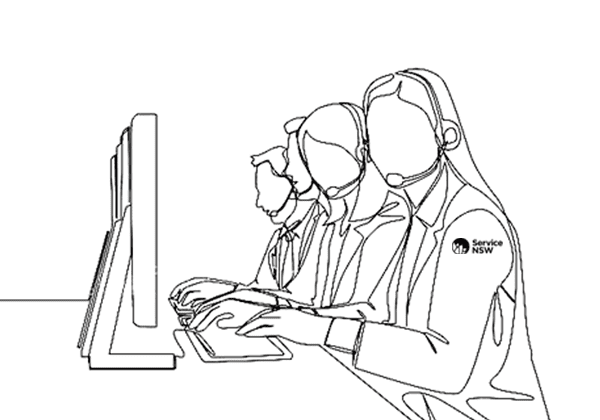“Thanks for calling Service NSW. How can I help you?”
This greeting is said tens and thousands of times a day at Service NSW. As a Customer Service Representative in the Covid-19 Department, I answer COVID-19 enquiries, from public health orders to grant applications for struggling businesses.
When I answer a phone call, I slap on my best customer service voice and attempt to force a verbal smile. But the people on the other end of the line aren’t just “customers” — they are people crying out for help. They are parents struggling to put food on the table, business owners trying to keep their workers on the books, and vulnerable people who have fallen through the cracks.
I want nothing more than to help these callers, but a complex web of bureaucracy makes that extremely difficult to do. Updates from NSW Health and the government are rarely communicated to us. All we have to work off are Frequently Asked Questions sheets and brief run-downs of internal communications. These are often an exact copy-and-paste of what is already on their website.
When callers come to us with questions, we often don’t have answers to give. We are the last to know every time Gladys Berejiklian steps up to her podium to announce new cases and restrictions. We were told of the latest rules a full half-hour after the announcement, resulting in a 30-minute window of frustrated and angry callers. I can’t blame them; they had every right to feel that way.
The most common queries are about the lack of clarity surrounding Public Health Orders. Under these rules, there are no clear definitions of “essential worker,” “authorised worker,” or “compassionate reasons.” We are told to say that the rules are ‘open to interpretation’ and that it is entirely up to police discretion.
I remember one particularly heartbreaking phone call with a client. In tears, they said their partner and children had left in a bitter divorce, and they simply wanted to visit family. We couldn’t give them official documentation for a compassionate visit. All I could say was that they would have to justify their travel to the police, which involves explaining, in great detail, the trauma or pain they were experiencing. There was the risk of a $5,000 fine if a cop were having a “bad day.” Disheartened and powerless, the person on the line couldn’t help but cry some more.
On top of the poor communication, the technical infrastructure is appalling. The laptops we were given to work from home are in terrible shape, and the programs and systems used by Service NSW are far from user-friendly. Our phone system is constantly crashing too. Even more frustrating is that that staff were mass onboarded for this lockdown but were only given half a day of training and sent outdated ‘How to Use’ handbooks.
Customer service is already a gruelling job. It’s even more challenging when every single caller is desperate for help — help that our government claims they can access. But the reality is a waiting time of three to five hours, followed by a half-hearted non-answer from an exhausted phone operator. Despite being the most frequent place of transmission, NSW is beginning to re-open workplaces at dangerous rates. In addition to the great sadness and frustration I feel whenever I perform my role, I also feel great anger towards the government, its failed leadership, and of course, the bureaucracy.





